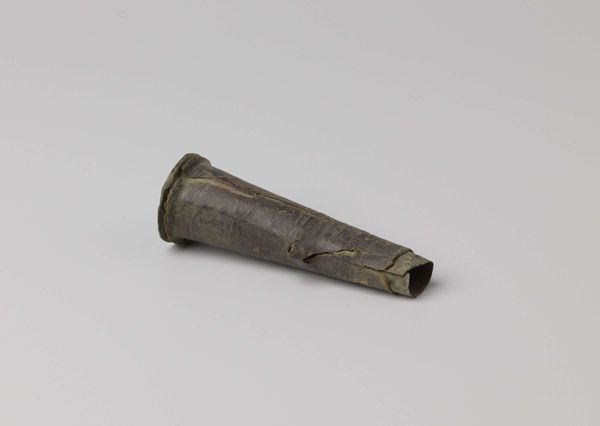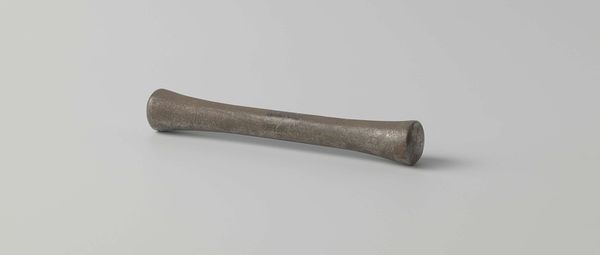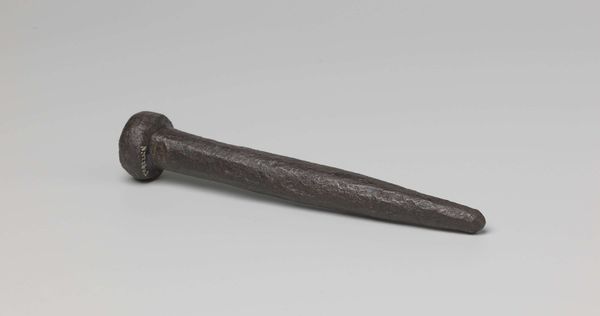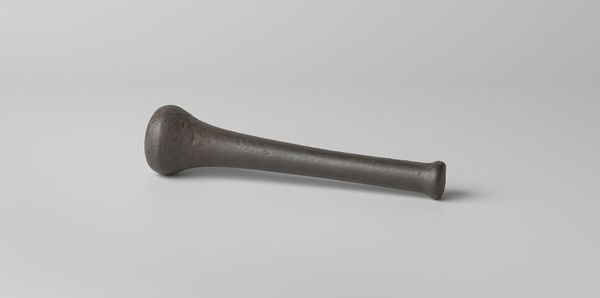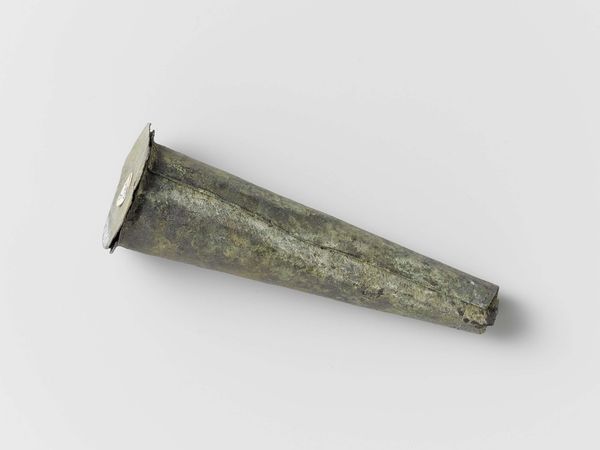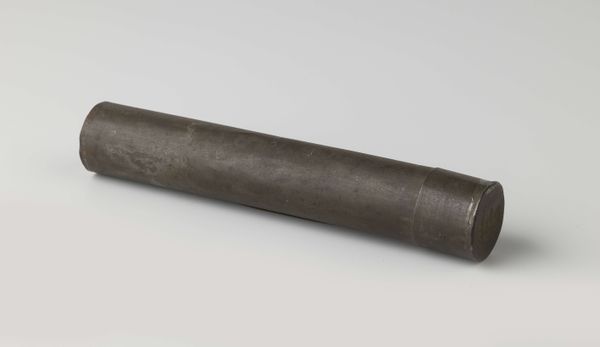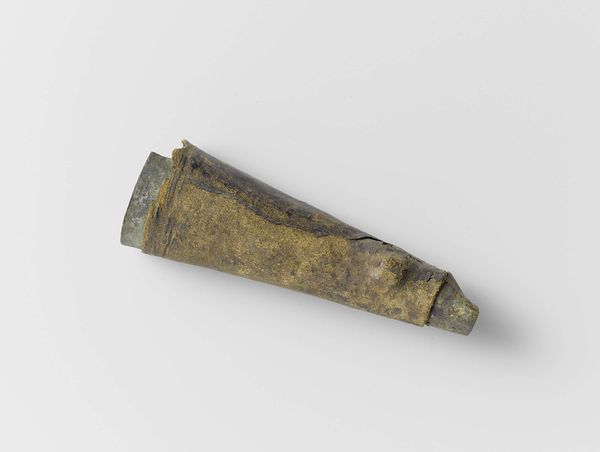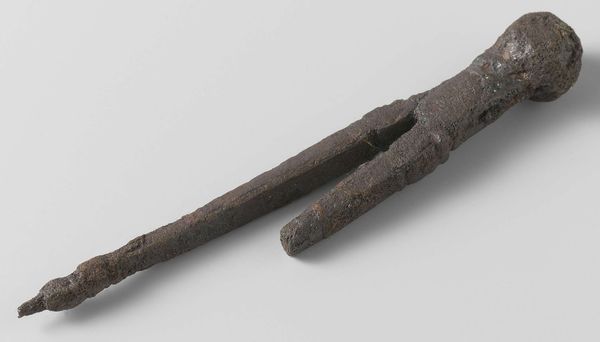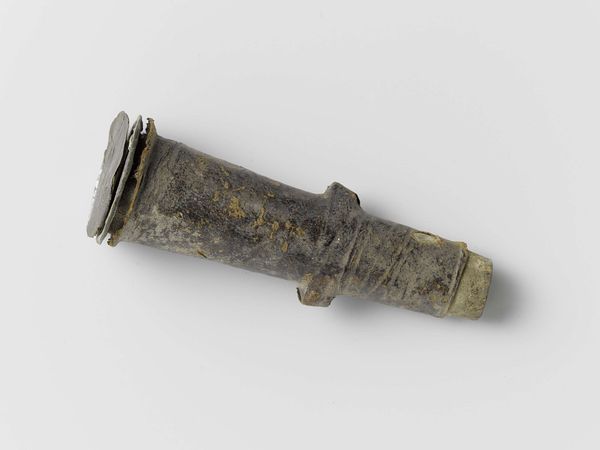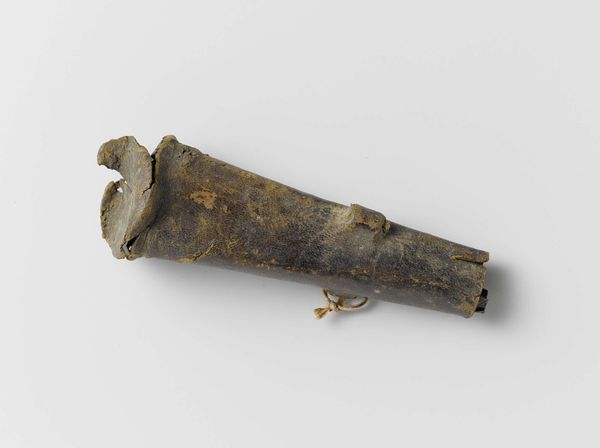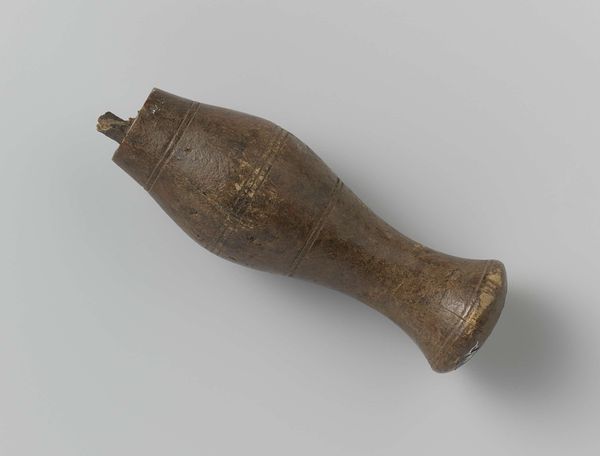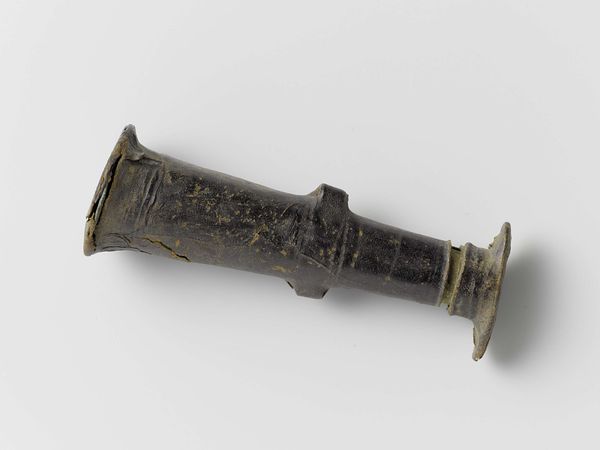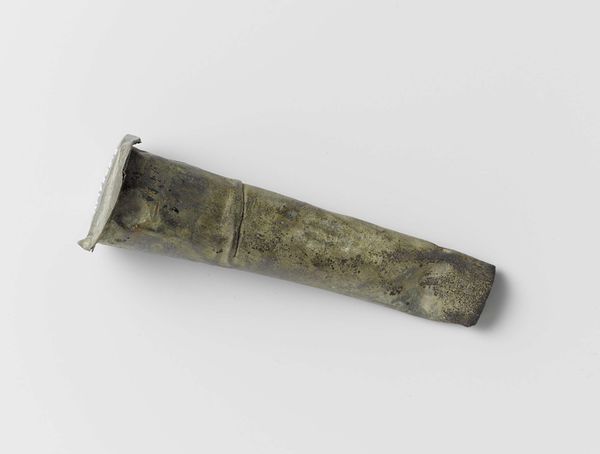
metal, bronze, sculpture
#
medieval
#
metal
#
bronze
#
form
#
sculpture
Dimensions: length 13.4 cm, diameter 5.3 cm
Copyright: Rijks Museum: Open Domain
Curator: What an interesting find. Before us is "Boutdrevel met platgeslagen kop," a bronze sculpture crafted by an anonymous artist around 1590-1596. It's currently housed here at the Rijksmuseum. Editor: It's so…utilitarian. And unassuming, at least at first glance. The surface texture almost tells a story of hard use. But why bronze? What's its intended purpose? Curator: Indeed, the material choice here elevates a mundane object, a type of drift or tool used in woodworking or metalworking, into something more symbolic. The flattened head is no accident; it's been hammered, used, and yet, immortalized in bronze. Think of the archetypal role of labor, how each strike impacts collective identity. Editor: I’m drawn to the relationship between the bronze and the tool it represents. This wasn’t mass produced in a factory, this was individually shaped and the evidence of that is preserved in the texture of the surface. Each indentation is its own symbol of material agency. Curator: Precisely. Consider also how this form carries associations from the Medieval period with notions of labor, construction, building empires… a tool used for creation or destruction, but rendered now as a historical artifact frozen in time. The patinated surface tells of centuries gone by, cultural memory crystallized. Editor: This single object speaks volumes about the historical value given to utilitarian items that were not often represented in Medieval times. The maker elevated what was once used, discarded and lost and turned it into an emblem worthy of display in an age defined by conspicuous wealth. Curator: Well, contemplating this humble bronze object allows us to consider not just the artistic interpretation of labor and cultural legacy, but to remember its social weight over the long trajectory of our histories. Editor: I concur. It reminds us how deeply objects embed themselves into our daily realities. And of the long legacy that continues to shape not just our current moment, but where we're headed next.
Comments
No comments
Be the first to comment and join the conversation on the ultimate creative platform.
